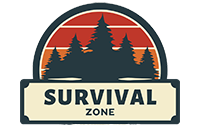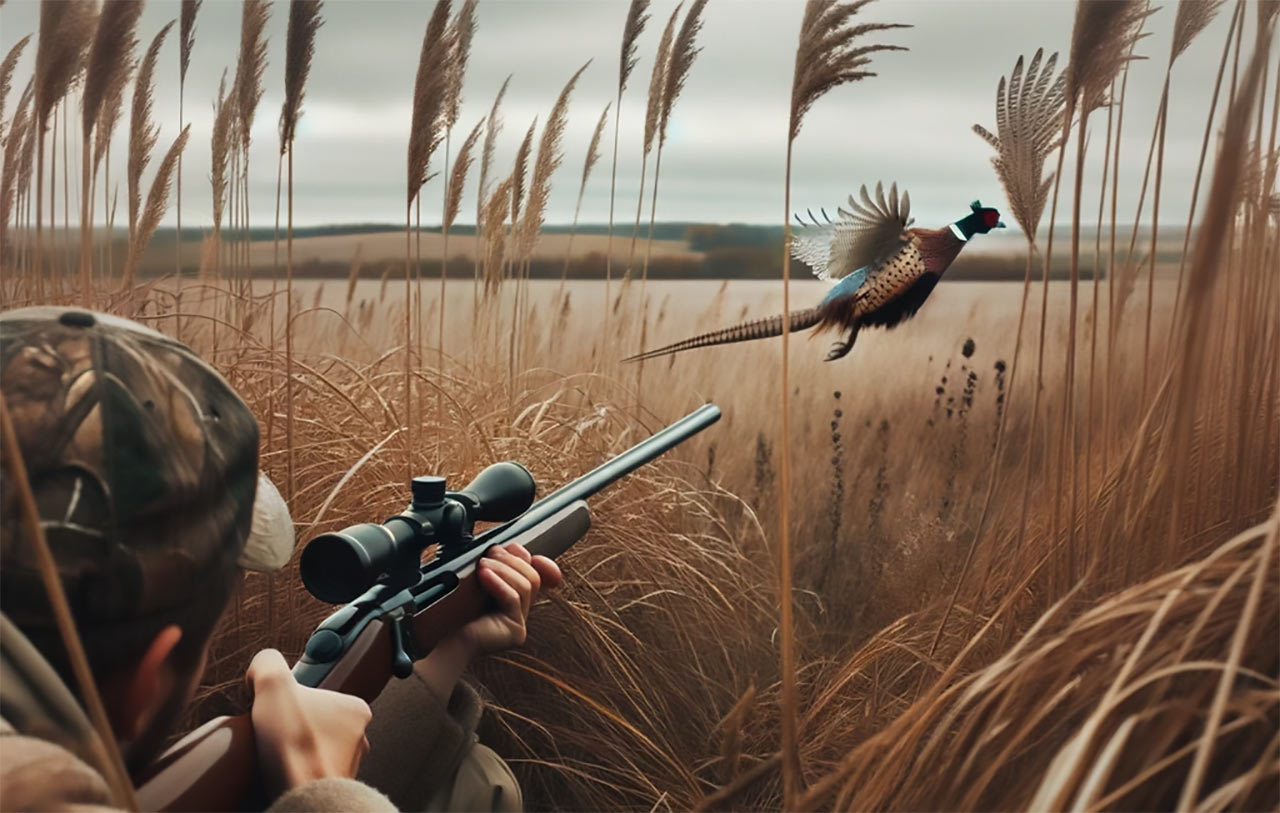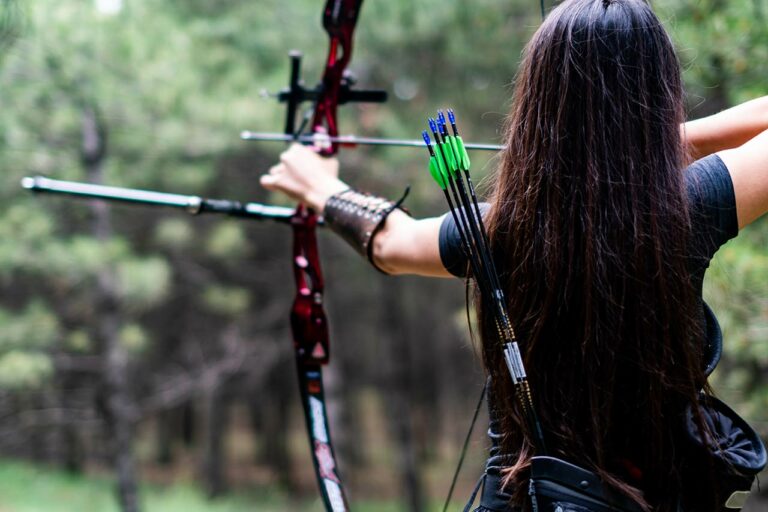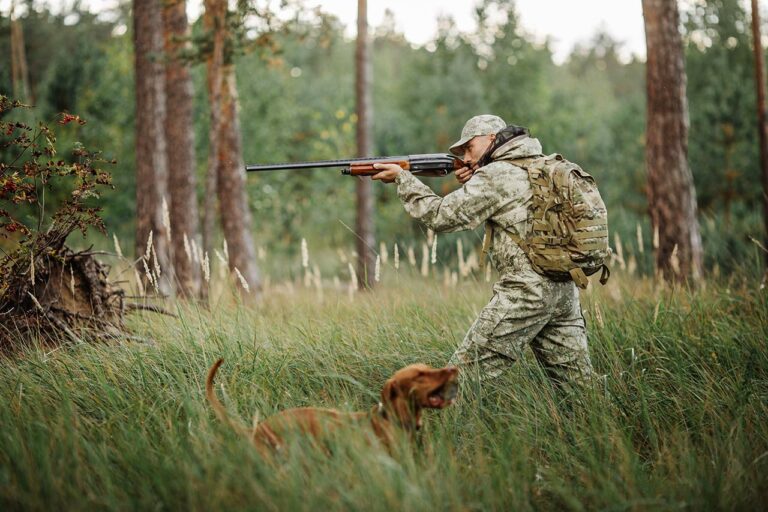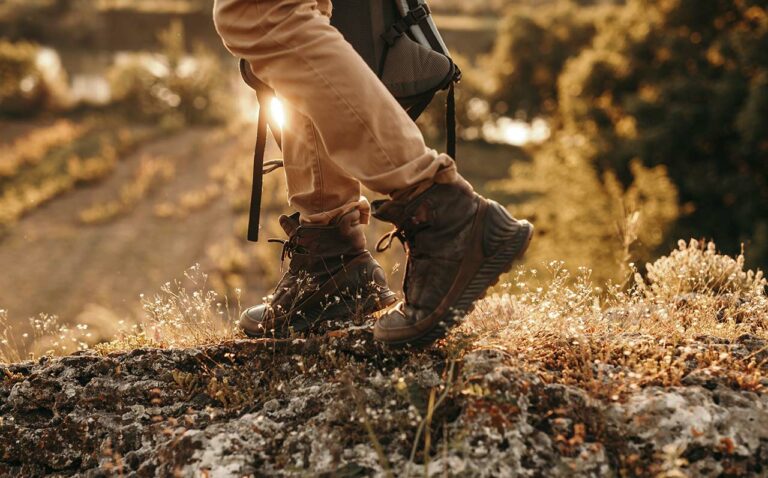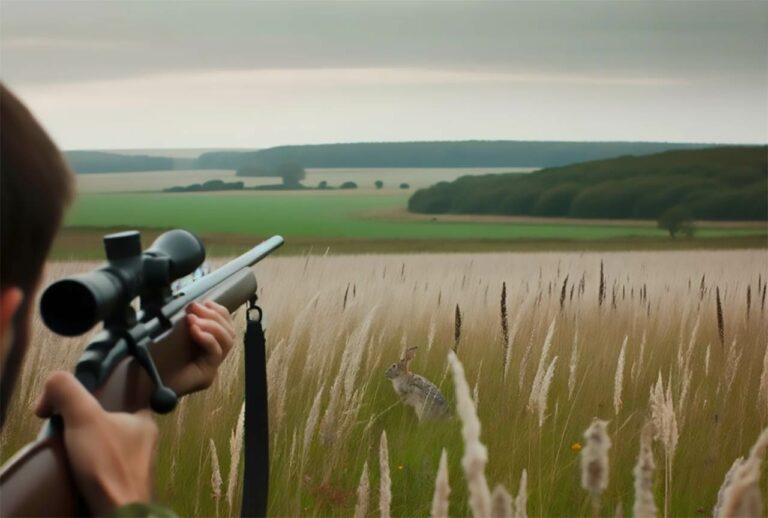Pheasant Hunting Tips For Beginners
Pheasant hunting is an exciting and rewarding outdoor activity for enthusiasts of all skill levels. As a beginner, there’s a lot to learn and experience, but don’t let that intimidate you. With a few essential pheasant hunting tips, you’ll be well on your way to enjoying successful hunts and creating lifelong memories in the great outdoors.
Before you venture out into the fields, it’s crucial to familiarize yourself with your state’s bird hunting regulations and to prioritize safety. Pheasants are known to be elusive, so hunting in groups and developing a shooting formation will make it easier for you to locate and flush out these birds. As you gain confidence and hone your skills, you’ll find that pheasant hunting is a thrilling way to connect with nature and test your survival abilities.
Understanding Pheasant Behavior
Rooster Characteristics
Roosters, or male pheasants, are known for their colorful plumage and distinctive call. They can become aggressive during the mating season, and are often more wary of predators and hunters. When pheasant hunting, understanding rooster behavior and characteristics will help you identify and locate them.
Roosters are creatures of habit. They tend to follow daily routines and exhibit distinct behaviors in different parts of the day. In the early morning, they usually feed in crop fields, then move to thick cover like cattails or wetlands as the day progresses.
Pheasant Habitat
Pheasants thrive in a variety of habitats, but they tend to prefer areas with a mix of farmland, wetlands, and natural cover. They often choose dense vegetation for security, such as grasslands, trees, and shrubs. Crop fields, like corn fields, offer food and shelter, while wetlands provide water sources and escape routes.
Pheasant Lifestyle
Pheasants are generally most active in the early morning and late afternoon. During these times, they move out of cover to feed in crop fields. As the day goes on, they transition to dense vegetation and roost sites, like cattails or trees, for warmth and protection.
To be successful in pheasant hunting, you should time your trips for early morning or late afternoon. Focus on the hours when pheasants are most active, and keep in mind that weather can affect their movements. Rain, for instance, can flush pheasants from cover, providing a golden opportunity for hunters.
Pheasant Hunting Equipment
Choice of Shotgun
When it comes to pheasant hunting, your choice of shotgun is crucial. Both 12-gauge and 20-gauge shotguns are suitable for beginners, with the 12-gauge offering more power and range, while the 20-gauge is lighter and easier to handle. A single-shot shotgun is a good option for beginners, as it enforces safe gun handling habits and a more deliberate approach to shooting.
Selecting the Right Shot
Choosing the right shot for pheasant hunting can make a big difference in your success. Steel shot or lead shot can be used, depending on local regulations and personal preference.
Steel shot is considered more environmentally friendly, but may not be as effective. Lead shot typically allows for a faster, denser pattern, which can be helpful when hunting fast-moving pheasants.
Check your local regulations to determine which type of shot is allowed in your area. Many areas ban lead shot, due to environmental concerns.
Choosing Clothing
Proper clothing is essential for a successful and comfortable pheasant hunting experience. Some key items to consider include:
- Blaze orange clothing: Wearing a blaze orange hat and vest is essential for safety, as it makes you highly visible to other hunters in the field. In many places, it’s required.
- Upland hunting brush pants: These pants provide protection from thorny bushes and rough vegetation that you may encounter while hunting.
- Comfortable boots: Invest in a well-fitted and comfortable pair of hunting boots to ensure you can cover long distances without discomfort.
- Gloves: A good pair of gloves will protect your hands from scrapes and scratches while you navigate the fields and brush.
Planning the Hunt
Understanding Hunting Regulations
Before embarking on your pheasant hunt, you need to familiarize yourself with the local and state regulations in the area where you plan to hunt. This includes obtaining the necessary hunting license from your state’s wildlife agency. Regulations can vary depending on location, so it’s crucial to research the rules, particularly for bag limits and upland bird season dates.
Determining Hunting Areas
To increase your chances of success during your pheasant hunt, it’s wise to scout out potential hunting spots ahead of time. Use maps and other resources to identify productive areas, such as agricultural fields, small patches of cover, or other prime pheasant habitat. Don’t be afraid to take chances on less-populated hunting areas, as the lack of hunting pressure might offer you better opportunities to find pheasants. When possible, try to coordinate with fellow hunters and create a strategy to cover more ground effectively.
Considering Hunting Weather
Weather can play a significant role in your pheasant hunting success. Pheasants tend to be more active during rainy days, so embrace the rain and use it to your advantage.
A light breeze can help carry your scent away from the birds and help you move more stealthily.
Always be prepared to adapt to changing weather conditions, as this can make the difference between a successful hunt and a challenging one.
Choosing the Best Time of Year
Each state sets its own upland bird season dates, and you should plan your hunts accordingly. Fall is a popular time for pheasant hunting because the birds are more visible in the fields and the weather is more favorable for long days outdoors. Just keep in mind that some public lands and wildlife management areas may have different regulations and restrictions on hunting during specific times of the year, so always check before planning your trip.
Techniques for Successful Pheasant Hunting
Using Dogs for Hunting
A reliable hunting dog, such as a Lab or a pointer, can significantly improve your pheasant hunting experience. Bird dogs can help you locate and flush out pheasants, as well as retrieve them after they’ve been shot.
When selecting a hunting dog, consider factors like breed, training, and temperament. Don’t forget to train your dog to work well with you in the field. A well-trained dog will be able to follow your commands and work effectively in a hunting environment.
Applying Tactics and Commands
There are various tactics and commands you can use to increase your chances of a successful pheasant hunt.
Zigzag
Walking hunters should move through cover in a zigzag pattern to cover more ground and flush pheasants out of their hiding spots.
Work the Wind
When hunting pheasant, always try to walk into the wind. This not only helps carry your scent away from the birds, preventing them from getting spooked, but it allows your dog to pick up the scent of the birds more easily.
Work with Your Dog
A well-trained hunting dog, especially pointers or retrievers, can be invaluable. They can help locate, flush, and retrieve birds. Trust your dog’s instincts. If they’re showing interest in a particular area, there’s likely a reason.
Silent Approach
Take great effort to be as quiet as possible. Pheasants have keen hearing and will run or fly away if they detect too much noise. Being silent might mean choosing clothing and shoes that make less noise or applying padding to dampen noise.
Blockers
When hunting in a group, use blockers at the end of a field or strip of cover. As walkers push through, pheasants often run ahead and will fly up when they reach the blockers at the end.
Edge Walking
Pheasants often feed and roost near the edges of fields. Walking along these edges can be productive, especially early in the morning or just before sunset.
Strategies for a Successful Flush
To effectively flush pheasants, incorporate several strategies. First, be patient and move slowly through the cover. Pheasants often circle behind impatient hunters, so taking your time will increase your chances of flushing them.
Hunt along fence lines, edges, ditches, and fields, as these areas provide good cover for pheasants. Look for heavy cover and concentrate on thick areas where pheasants may go unseen. When flushing birds, you can designate specific roles for hunters involved:
- Blocker: Positions themselves at the end of a field or fence row to intercept flushed pheasants.
- Flusher: Walks through the thick cover, flushing pheasants towards the blocker.
- Handler: Works closely with the bird dog and provides additional shooting support.
Solo Versus Group Hunting
Pheasant hunting can be both a social activity and a solo pursuit. But hunting with a team can greatly improve your chances of success. Groups of hunters can create additional hunting pressure, which may force pheasants from their hiding spots. When hunting in groups, divide responsibilities and plan a shooting formation to ensure safety.
Solo hunters can approach pheasant hunting more methodically and stealthily. You won’t have the advantage of numbers, but may gain the advantage of surprise.
Knowing how to hunt pheasant both in a group and solo are both good survival skills to learn.
Frequently Asked Questions
When is the optimal hunting season for pheasants?
The optimal hunting season for pheasants usually falls during the fall and winter months. This is when the birds are most active and their populations are at their peak. However, the specific dates may vary from state to state, so it’s always essential to familiarize yourself with your state’s bird hunting regulations.
Which states are best for pheasant hunting?
There are several states across the United States that offer fantastic pheasant hunting opportunities. Some of the top states include South Dakota, Nebraska, Iowa, Kansas, and Minnesota. These states have a high abundance of pheasants and diverse landscapes that cater to successful pheasant hunting experiences.
What is the ideal pheasant hunting strategy?
An ideal pheasant hunting strategy involves a combination of preparation, scouting, and teamwork. First and foremost, ensure you have proper gear and safety equipment, such as blaze orange clothing and eye and ear protection. Then, scout potential hunting areas to identify signs of pheasant presence and plan your hunt accordingly.
Hunting in a group is an excellent strategy as it allows you to cover more ground and increases your chances of locating and flushing out pheasants.
Choosing a good hunting dog can also play a significant role in a successful pheasant hunt, as dogs can track and flush the birds out of cover.
Remember, pheasants tend to move out of heavy cover and into more open roost sites during the last hour of daylight, so it’s smart to plan your pheasant-hunting trip around this time.
